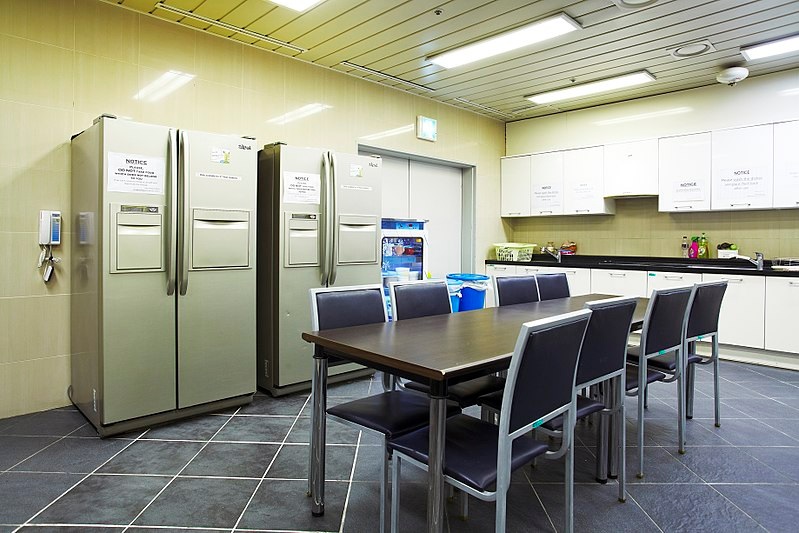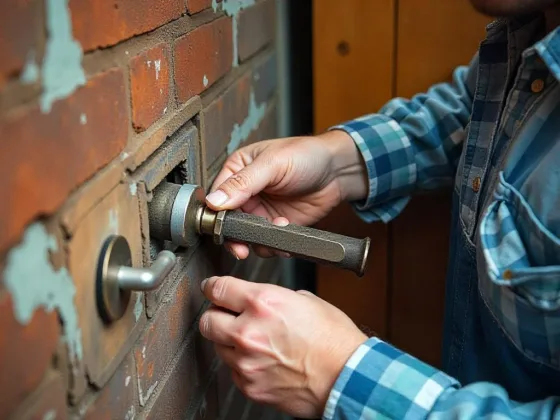Table of Contents Show
The college kitchen certainly will not compare to what Mom provided, but a little advanced preparation can make stocking one less challenging.
Dorm life or apartment living close to campus may seem like a dream situation for the new college student until the reality of missing kitchen essentials hits. Moving from Mom’s completely stocked and well-loved cooking area to the confines of a college kitchen can be difficult if no preparation is done.
Dorm essentials for the kitchen vary from student to student and from college to college. So kingessays.com has gathered information about available appliances, equipment, workspace, and dorm life cooking rules that will save dollars and prevent frustrating moments.

Ask About College Kitchen Equipment
If the living arrangements are in an apartment complex with a full kitchen, it is important to know if all appliances are provided.
An efficient apartment may have a mini-refrigerator or may not have a stove. Knowing the equipment on hand allows for informed decisions on what items should be on the dorm shopping list.
A college kitchen on campus may have full-sized appliances for shared use, but dorm rooms may be allowed small cooking items like microwaves or toaster ovens. Before shopping for dorm cooking utensils or storage items, learn what the cooking options are.
For areas with only a microwave, invest in better quality microwavable dishes to last the entire year. For dorms that provide kitchen items, ask exactly what is available to prevent duplication.
Dorm Life Kitchen Items
When making the dorm shopping list, consider which appliances and utensils will be used. A novice cook preparing one meal a week will not need the utensil set-up of an experienced cook. If the student is an avid baker, consider purchasing a set of baking pans, cookie sheets, and other related items.
The ability to make late-night brownies may make the baking pan more essential than the casserole dish. Reduce expenditures and avoid having five popcorn poppers and no toaster in the dorm kitchen by discussing purchases with other students using the same kitchen.
To find the mix of items to best help the student feel more at home in a college kitchen, consider how much time the student will be spending there.
Will most meals be eaten in the cafeteria? Is the kitchen just a backup to the main planned eating arrangement? The dorm kitchen shopping list will differ based on the answers to these questions.
College Kitchen Pantry Items
When stocking the college kitchen pantry, consider how much secure storage space is available. Even a student with a meal plan for the campus cafeteria will want to make meals when classes run past serving hours but must be able to find a place to put the goods.
Dorm food essentials include items easily stored as well as easily prepared. If dorm life includes access to a full-sized refrigerator, frozen meals may be on the shopping list. For one with a mini-fridge or limited cold storage, packaged or canned meals can fill the void.
Prepackaged snack items may be stored in the dorm room if space allows. Quick-grab breakfast items are essential for early class mornings. Visiting the dorm or apartment before stocking up on favorite snacks is advisable since many rooms have limited storage.
Read Also:
College Dorm Checklist for Snacks and Meals
Consider what items can go in a refrigerator. Keep to small sizes and items that are packaged individually so an entire container doesn’t go bad.
- Milk can be used for coffee or tea, poured onto cereal, or consumed at is. If it isn’t going to be used daily, it probably isn’t worth keeping.
- Yogurt is best purchased in individual serving sizes, which make perfect grab-and-go snacks. Shake some
- Cheese sticks can be paired with raw veggies or crackers for an easy snack.
- Keep cream cheese, but only if the student has to have a morning (or midnight) bagel and cream cheese.
- Eggs are messy (and smelly) to cook, even with some of those handy tools that cook eggs in the microwave.
- Fresh fruits and vegetables make fast and healthful snacks. Although pre-cut vegetables are more expensive than whole items and can go bad faster, if they’ll eaten, the ease is worth it.
Dorm Shopping List for the Grocery Store
These dry goods make for handy and healthful snacks, even if there is no microwave or refrigerator in the room.
- Raisins, dried cranberries, or other dried fruits
- Almonds, walnuts, pecans, peanuts
- Chocolate chips (create a trail mix by tossing together the raisins, some nuts, dry cereal, and the chocolate chips)
- Canned tuna
- Crackers
- Pretzels
- Snack bars
- Salsa
- Tortilla chips (toss on shredded cheese and canned black beans and microwave)
If there is a microwave, keep a few microwave-safe dishes on hand for cooking quick and easy meals or snacks. Avoid eating too many packaged microwave meals that are often high in calories and sodium.
- Rice (It is easier to cook in the microwave than pasta because it absorbs the water. Packaged pasta side dishes usually don’t need to be drained but they may need things like milk and butter for their preparation; they are also high sodium foods.)
- canned soup
- popcorn
- oatmeal (get the plain and mix in dried fruit and nuts)
- peanut butter
- jam, jelly, or preserves in a favorite flavor
- bread
- coffee
- teabags
- granulated sugar and/or honey for the tea and coffee.
College Kitchens Go Green
A reliable hand can opener may be the better choice of utensils than the electric opener. Not only does the go-green approach use less electricity but manual openers are also more portable and easily stored.
Other green kitchen options include adding kitchen towels to replace the paper towels and stocking the cabinets with storage containers instead of single-use plastic bags. If purchasing an appliance, check the energy star ratings to determine the efficiency of the item.
Figuring out what the college kitchen offers before shopping for dorm essentials will make adapting to new living arrangements easier for the student. Even though students are creative and make the best of the situation, planning and stocking the college kitchen pantry makes the transition less stressful for all.
Considering the items needed and space available before the big move day allows more frugal shopping and cash savings to use for trips back home.
Dorm Necessities
A small selection of food storage containers is useful. Leftovers from a local restaurant will last longer and hold up to transport in a storage container. Containers ranging from half-cup to four cups can double as serving bowls.
Pour in the cereal and milk or yogurt and granola, put on the cover, grab a spoon, and the student has a healthy meal they can eat too (or in) class.
Planning for snacks and meals involves keeping a few dorm necessities on hand. Avoiding late-night runs to vending machines and convenience stores for food allows the student to make healthier choices while remaining on a budget.









